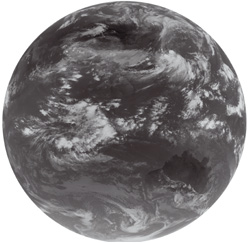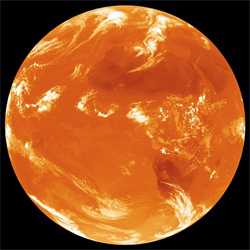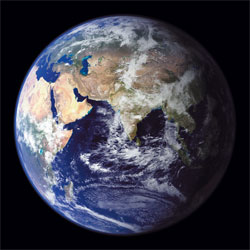Description
Visible/IR imaging multi-spectral radiometers are used to image the Earth’s atmosphere and surface, providing accurate spectral information at spatial resolutions of order 100m up to several km, and with a swath width generally in the range several hundred to a few thousand km.
Sensing usually occurs in multiple narrow, precisely calibrated spectral channels. These instruments cannot penetrate cloud or rain and hence are predominantly limited to clear weather observations.
The information obtained from these instruments is often complemented by that from atmospheric sounders, since in deriving parameters such as surface temperatures, atmospheric effects such as absorption must be taken into account.
Recent developments include improvements in spatial resolution, in some cases, equivalent to those of high resolution imagers, and in spectral resolution and radiometric accuracy. Planned hyperspectral instruments will be able to simultaneously acquire imagery in many tens of wavebands which should significantly improve the quality of land cover and land use information derived from satellite imagery.
Applications
Measurements from these multi-spectral radiometers operating in IR and visible bands may be used to infer a wide range of parameters, including information on sea and land surface temperatures, snow and sea ice cover, and Earth surface albedo. These instruments may also make measurements of cloud cover and cloud-top temperatures, and measurements of the motion vectors of clouds made by radiometers on geostationary satellites may be used in order to derive tropospheric wind estimates.
Visible/IR radiometers are an important source of data on processes in the biosphere, providing information on global-scale vegetation and its variations on subseasonal scales which allow monitoring of natural, anthropogenic, and climate-induced effects on land ecosystems. Classification and seasonal monitoring of vegetation types on a global basis allows modelling of primary production (the growth of vegetation that is the base of the food chain) and terrestrial carbon balances. Such information is of great value in supporting the identification of drought areas and provides early warning on food shortages.
  Weather satellite data, such as these images from EUMETSAT and from China’s FY satellite, are an essential input to todays weather forecasting systems |
 This spectacular ‘blue marble’ image is the most detailed true-colour image of the entire Earth to date, produced in early 2002 using data from MODIS |
| Current & planned instruments AATSR ABI ATSR-2 AVHRR/2 AVHRR/3 CCD camera CIA CZI Geoton-L1 GLI follow-on HES HRMS HSC HSI (HJ-1A) HSMS HSRS HSS HSTC HYC Hyperion IIR Imager (INSAT) Imager IMAGER/MTSAT-1R IMAGER/MTSAT-2 IR (HJ-1B) IR Camera (SAOCOM) IVISSR (FY-2) Klimat LAC MERIS MERSI MMRS MOC MODIS MR-2000M1 MS (GISTDA) MSS (Roskosmos) MSU-GS MSU-M MSU-MR MSU-SM MUX MVIRI NIRST OBA OEA OLS OSMI PSA PSS RDSA SEVIRI SPECTRA TIS (CONAE) VEGETATION VHRR VIIRS VIRR VISSR (GMS-5) WAOSS-B WFC WFI-2 WiFS |
| AVHRR: edcwww.cr.usgs.gov/glis/hyper/guide/avhrr SEVIRI (METEOSAT): www.esrin.esa.it/msg/pag4.html IMAGER (GOES): noaasis.noaa.gov/NOAASIS/ml/imager.html MODIS: modis.gsfc.nasa.gov VEGETATION: vegetation.cnes.fr |